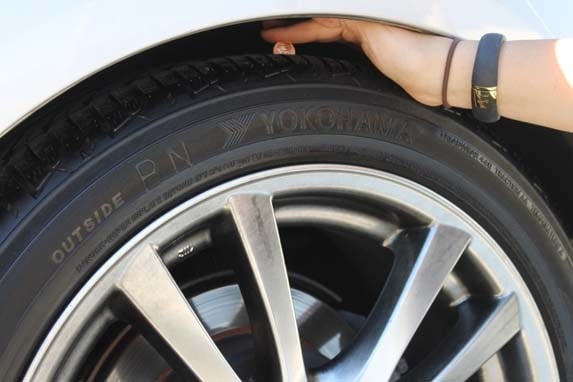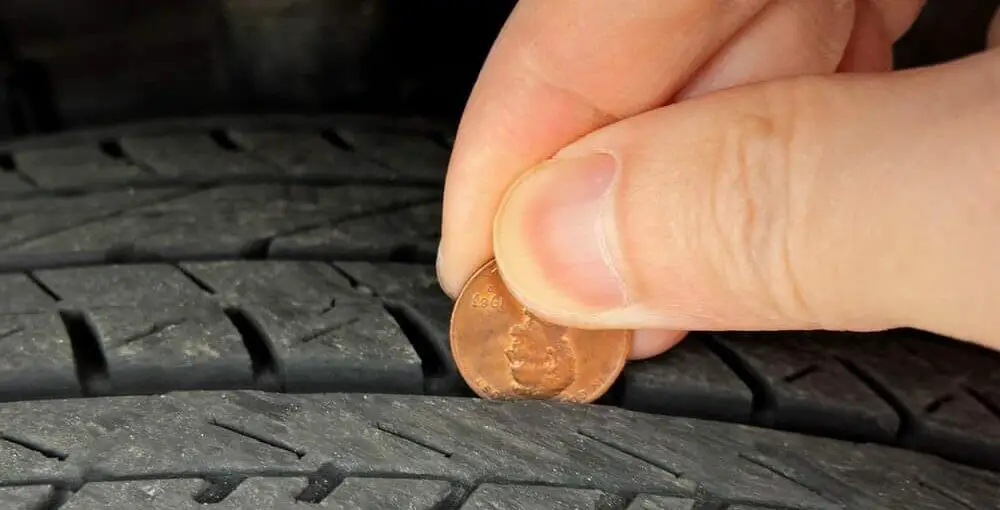How to Check Tires on Used Car
If you’re thinking about buying a used car, it’s important to know how to check the tires. This is especially true if you’re not familiar with the car model and don’t know when the tires were last replaced. Here are some tips on how to check tires on a used car:
First, take a close look at the tread. You should be able to see tire tread wear indicators, which are raised bars or ridges located in the deepest grooves of the tread. If these bars or ridges are even with the surrounding tread, it’s time for new tires.
Next, check for bald spots or cuts in the sidewalls of the tires. These can be caused by driving over potholes or other road hazards. If you see any bald spots or cuts, have a professional inspect the tire to see if it needs to be replaced.
Finally, make sure that all four tires are inflated to the correct pressure. The recommended tire pressure can be found in your car’s owner’s manual or on a sticker inside the driver’s doorjamb. Underinflated tires can lead to poor fuel economy and premature tire wear.
- Before you start shopping for a used car, it is important to know how to check the condition of the tires
- You will want to look for any visible signs of damage, such as cracks, punctures, or bald spots
- It is also important to check the tread depth of the tires
- The tread depth should be at least 4/32 of an inch
- If you are not sure how to check the tread depth, you can ask a salesperson or mechanic at the dealership for help

Credit: www.kbb.com
How Do You Check Tire Tread on Used Tires?
When you are in the market for new or used tires, it is important to know how to check tire tread. This will ensure that you are getting a quality product that will last. There are a few different ways to check tire tread depth, and each has its own advantages and disadvantages.
The first way to check tire tread depth is with a penny. Simply insert the penny into the tread grooves headfirst. If you can see all of Lincoln’s head, then the treads are less than 2/32″ deep and it’s time for new tires. If part of Lincoln’s head is obscured by the tread, then the depth is between 2/32″ and 4/32″. depths greater than 4/32″ are considered safe for use.
Another way to measure tread depth is with a ruler or measuring tape. Insert the ruler into the center of the tread groove and measure from the bottom of the groove to the top of the rubber. Once again, depths less than 2/32″ need to be replaced while those between 2/32″ and 4/32″ are still safe for use.
The final way to check tire tread depth is with a special tool called a durometer. This measures the hardness of rubber and can give you an accurate reading of how much life your tires have left in them. Keep in mind that this method should only be used on new tires, as old tires may not give an accurate reading.
No matter which method you choose, it is important to regularly check your tire tread depth. Doing so will help ensure that your tires last as long as possible and keep you safe on the roadways!
How Do I Check My Tires on My Car?
It’s important to check your tires on a regular basis to ensure they are properly inflated and have enough tread. Here are some tips on how to check your tires:1. Use a tire pressure gauge to check the air pressure in each tire, including the spare.
The ideal pressure for most passenger cars is between 32 and 35 psi (pounds per square inch).2. Check the tread depth of each tire using a tread depth gauge or by inserting a penny headfirst into the tread grooves. If you can see all of Abraham Lincoln’s head, then the tread is worn down and it’s time for new tires.
3. Inspect the sidewalls of each tire for cracks, bulges, or other damage. If you see any damage, have the tire inspected by a professional as soon as possible.4. Take note of any unusual vibrations or shakiness while driving, as this could be an indication that one or more tires are out of balance or that there is another issue with the vehicle’s suspension system.
How Old Can Tires Be on a Used Car?
It’s common for drivers to want to save money by buying used tires, but how old can they be? Tires are one of the most important safety features on a car, so it’s important to make sure they’re in good condition.The maximum age for a tire is six years from the date of manufacture, so if you’re looking at used tires, be sure to check the date code.
The date code is a four-digit code that indicates when the tire was made. The first two digits indicate the week of production and the last two digits indicate the year. For example, a tire with a date code of 2504 would have been manufactured in the 25th week of 2004.
Keep in mind that even if a tire is within its max age limit, it may not be safe to use. If a tire has been damaged or improperly repaired, it could fail prematurely. It’s always best to err on the side of caution and get new tires if you’re unsure about their condition.
How Do You Check If Your Tires are Ok?
It’s important to regularly check your tires to make sure they are in good condition and have enough tread. There are a few different ways you can check your tires.One way is to use a tire gauge.
You can find these at most auto parts stores. Just insert the tire gauge into the tire’s valve stem and get a reading. The ideal reading should be between 30 and 35 PSI (pounds per square inch).
If it’s below that, you’ll need to add air; if it’s above, you should let some out.Another way to check your tires is by doing the “penny test.” Take a penny and insert it into the tread of your tire, with Lincoln’s head pointing down into the tread.
If you can see all of Lincoln’s head, that means your tread depth is less than 2/32 of an inch and you need new tires ASAP. But if part of Lincoln’s head is covered by the tread, then your tires are still OK for now.You can also visually inspect your tires for any signs of wear or damage, such as cracks in the sidewall or bulges in the tread.
These are signs that your tire may be damaged and could fail while you’re driving, so it needs to be replaced immediately.It’s easy to take our tires for granted since they don’t require much maintenance – just a little air every now and then. But it’s important to remember that they are what keep our cars running smoothly and safely on the road, so we need to take care of them!
What To Look For When Buying New or Used Tires buy tires how to read tires car advice
Can a Dealer Sell You a Car With Bad Tires
If you’re in the market for a new car, you might be wondering if a dealer can sell you a car with bad tires. The answer is yes – but there are a few things you should know first.For starters, it’s important to understand that dealers are not required to disclose any information about the condition of the tires on a used car.
So, if you’re buying a used car from a dealer, be sure to inspect the tires yourself before making your purchase.If you do find that the dealer has sold you a car with bad tires, there are a few options available to you. First, you can try to negotiate with the dealer for a lower price or ask them to replace the tires before you take delivery of the vehicle.
If neither of those options is possible or desirable, your next best bet is to file a complaint with your state’s attorney general’s office or consumer protection agency.Of course, it’s always best to avoid buying a car with bad tires in the first place by doing your homework and thoroughly inspecting any vehicle before making a purchase. But if you do find yourself in this situation, remember that you have rights and options available to you.
Conclusion
If you’re in the market for a used car, it’s important to know how to check the tires. The condition of the tires can tell you a lot about the overall condition of the vehicle and whether or not it has been well-maintained. Here are a few things to look for when inspecting used car tires:
1. Check the tread depth. The tread depth should be at least 4/32 of an inch. If it’s any less than that, the tire needs to be replaced.
2. Look for uneven wear patterns. This could indicate problems with the alignment or suspension.3. Inspect the sidewalls for cracks or other damage.
This could be a sign that the tires are old and need to be replaced.


